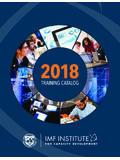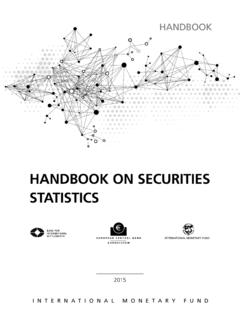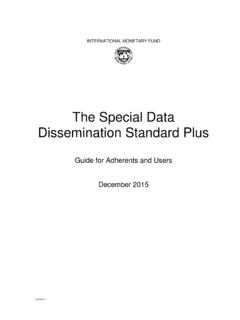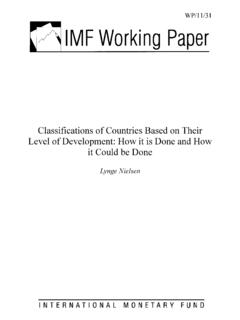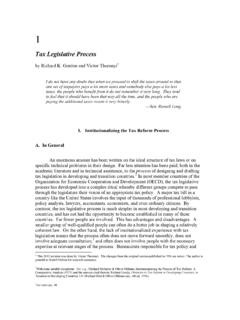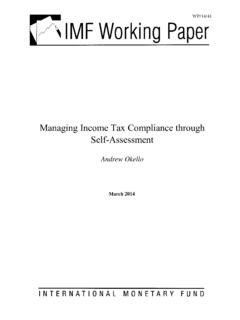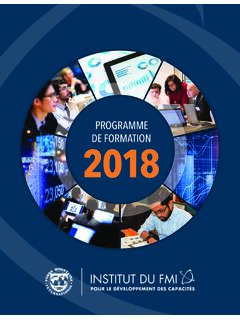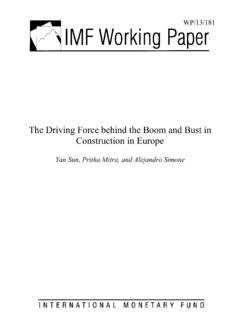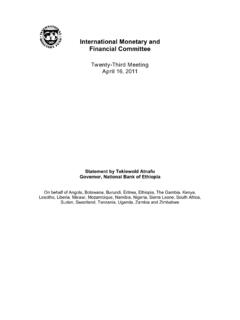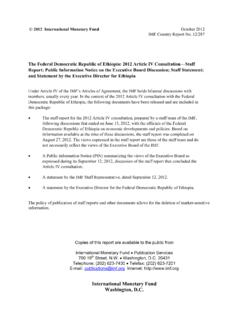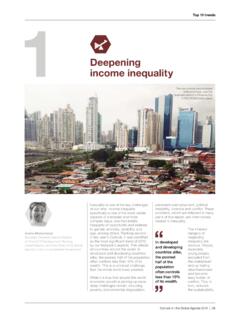Transcription of Economic Diversification in the GCC: Past, Present, and Future
1 December 2014 SDN/14/12 I M F S T A F F D I S C U S S I O N N O T E Economic Diversification in the GCC: Past, Present, and Future Tim Callen, Reda Cherif, Fuad Hasanov, Amgad Hegazy, and Padamja Khandelwal Economic Diversification IN THE GCC 2 INTERNATIONAL MONETARY FUND INTERNATIONAL MONETARY FUND Institute for Capacity Development and Middle East and Central Asia Department Economic Diversification in the GCC: The Past, the Present, and the Future Prepared by Tim Callen, Reda Cherif, Fuad Hasanov, Amgad Hegazy, and Padamja Khandelwal1 Authorized for distribution by Institute for Capacity Development and Middle East and Central Asia Department DISCLAIMER: Staff Discussion Notes (SDNs) showcase policy-related analysis and research being developed by IMF staff members and are published to elicit comments and to encourage debate.
2 The views expressed in Staff Discussion Notes are those of the author(s) and do not necessarily represent the views of the IMF, its Executive Board, or IMF management. JEL Classification Numbers: O14, O25, Q32 Keywords: Diversification , growth, exports, GCC Authors E-mail Addresses: 1 This paper benefited from the discussions and conclusions of the high-level conference on Economic Development, Diversification , and the Role of the State, jointly organized by the Kuwait Ministry of Finance and the IMF s Middle East Center for Economics and Finance (CEF), Institute for Capacity Development (ICD), and Middle East and Central Asia Department (MCD) and held in Kuwait City during April 30 May 1, 2014.
3 The support of the Kuwaiti authorities is gratefully acknowledged. More information is available at The paper has also benefited from comments by Alberto Behar, Phil de Imus, and Alfred Kammer. Peter Gruskin and Ben Piven provided research assistance, and Diana Kargbo-Sical and Sarah Knight provided editorial assistance. Economic Diversification IN THE GCC INTERNATIONAL MONETARY FUND 3 CONTENTS EXECUTIVE SUMMARY _____ 4 INTRODUCTION _____ 5 THE CASE FOR Economic Diversification IN THE GCC _____ 6 Diversification IN THE GCC: PROGRESS SO FAR _____ 11 POLICIES TO SUPPORT Diversification IN THE GCC _____ 18 A MISSING LINK CHANGING THE INCENTIVES OF FIRMS AND WORKERS _____ 23 CONCLUSIONS AND POLICY RECOMMENDATIONS _____ 25 REFERENCES _____ 30 BOXES 1.
4 The Role of Economic Diversification and Export Quality Upgrading in Sustaining Economic Growth _____ 7 2. Economic Diversification in National Development Plans in the GCC _____ 11 3. Dubai s Road to Growth and Diversification _____ 13 4. Financial and Fiscal Diversification in the GCC _____ 17 5. Experiences with Diversification in Oil-Exporting Countries _____ 19 FIGURES 1. GCC: Economic Structure _____ 8 2. GCC: Improvement in Human and Social Development Indicators _____ 9 3. Weaknesses in the GCC Growth Model _____ 10 4. Real GDP in the GCC, 2001 13 _____ 12 5.
5 GCC Exports: Trends in Non-oil Exports and Diversification _____ 14 6. GCC Exports: Share of Manufactures and Trends in Export Product Diversification and Export Quality _____ 15 7. Export Quality Ladders across the GCC _____ 16 8. Macroeconomic Stability and Policies _____ 18 9. Research and Development Expenditures, 2000 09 _____ 22 10. Nominal GDP, by Income Approach _____ 24 11. education and School Enrollment _____ 25 12. Monopoly-Related Indicators _____ 28 13. Services Trade Restrictions Index _____ 28 Economic Diversification IN THE GCC 4 INTERNATIONAL MONETARY FUND EXECUTIVE SUMMARY The Gulf Cooperation Council (GCC) growth model has delivered strong Economic and social outcomes over several decades.
6 GCC economies rely on oil as the main source of export and fiscal revenues. Over the years, GCC governments have increased public sector employment and spending on infrastructure, health, and education . This has helped raise standards of living and support private sector activity, particularly in the nontradables sector. The current growth model has weaknesses, however, and increasing Economic Diversification is paramount. Greater Diversification would reduce exposure to volatility and uncertainty in the global oil market, help create private sector jobs, increase productivity and sustainable growth, and establish the non-oil economy that will be needed in the Future when oil revenues start to dwindle.
7 A number of policies have been adopted to diversify the GCC economies and reduce their reliance on oil. A stable, low-inflation Economic environment has been achieved, the business climate has been strengthened, education has been expanded, trade and foreign direct investment (FDI) has been liberalized, and the financial sector deepened. National development plans are being implemented with a view toward boosting the human capital of nationals, and developing new industries and services that can employ high-skilled labor. Nevertheless, to date these Diversification strategies have yielded mix results.
8 The share of non-hydrocarbons output in GDP has increased steadily but is highly correlated with oil prices, and progress with export Diversification , a key ingredient to sustainable growth, has been more limited. International experience shows that diversifying away from oil is very difficult. Success or failure appears to depend on the implementation of appropriate policies ahead of the decline in oil revenues. Malaysia, Indonesia, and mexico perhaps offer the best examples of countries that have been able to diversify away from oil, while Chile has had some success in Diversification away from copper.
9 In addition to creating a favorable Economic and business environment, these countries focused on export Diversification and quality upgrading by encouraging firms to develop export markets and by supporting workers in acquiring the relevant skills and education to boost productivity. Going forward, Diversification in the GCC will require realigning incentives for firms and workers. At present, the distribution of oil revenues within the economy crowds out non-oil tradables production. Producing nontradables is less risky and more profitable for firms because they can benefit from the rapid growth in government spending, while the easy availability of low-skilled, low-wage foreign labor has helped extract larger rents.
10 The continued availability of public sector jobs discourages nationals from pursuing entrepreneurship and private sector employment. In addition to measures that improve the business environment, there is a need to fundamentally alter these incentives to fill a missing link in current policies. Measures could include reorienting public spending, strengthening the role of private sector competition, developing backward and forward linkages across sectors with a comparative advantage, and implementing labor market reforms to incentivize private sector employment of nationals and improvements in productivity.
